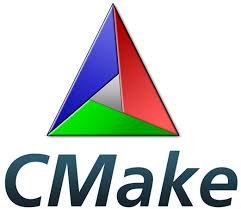
In this tutorial, we will show you how to install CMake on CentOS 8. For those of you who didn’t know, CMake, an essential tool in the software development ecosystem, has revolutionized the way developers manage build processes across various platforms. This powerful cross-platform build system generator simplifies the compilation and linking of complex software projects. For CentOS 8 users, installing CMake opens up a world of possibilities for efficient software development.
This article assumes you have at least basic knowledge of Linux, know how to use the shell, and most importantly, you host your site on your own VPS. The installation is quite simple and assumes you are running in the root account, if not you may need to add ‘sudo‘ to the commands to get root privileges. I will show you the step-by-step installation of CMake on a CentOS 8 server.
Prerequisites
- A server running one of the following operating systems: CentOS 8 or RHEL-based such as AlmaLinux and Rocky Linux.
- It’s recommended that you use a fresh OS install to prevent any potential issues.
- SSH access to the server (or just open Terminal if you’re on a desktop).
- A stable network connection.
- A
non-root sudo useror access to theroot user. We recommend acting as anon-root sudo user, however, as you can harm your system if you’re not careful when acting as the root.
Install CMake on CentOS 8
Step 1. Update the System.
Keeping your system up-to-date is a fundamental best practice in Linux administration. It ensures you have the latest security patches and software versions, reducing potential conflicts during the installation process. To update your CentOS 8 system, follow these steps:
sudo dnf clean all sudo dnf update
This ensures that all installed packages are up-to-date and any security patches are applied.
Step 2. Installing Dependencies.
CMake requires several dependencies to function correctly. Install the necessary packages using the following command:
sudo dnf install gcc make ncurses-devel zlib-devel curl-devel
Step 3. Installing CMake on CentOS 8.
- Installing CMake from the official source.
With the dependencies in place, it’s time to download the CMake source code. While CentOS 8’s default repositories often contain older versions of software, downloading directly from the official source ensures you get the latest release. Here’s how to do it:
Now we download the latest version of CMake from GitHub:
wget https://github.com/Kitware/CMake/releases/download/v3.30.2/cmake-3.30.2-linux-x86_64.tar.gz tar -zxvf cmake-3.30.2-linux-x86_64.tar.gz cd cmake-3.30.2-linux-x86_64
Compile from source and install:
./bootstrap make sudo make install
After completing the installation process, it’s crucial to verify that CMake has been installed correctly and is accessible from the command line. To do this, simply run:
cmake --version
This command should display the version information of the installed CMake. If you see the version number (which should be 3.30.2 if you followed this guide), congratulations! You’ve successfully installed CMake on your CentOS 8 system.
- Installing CMake using Snap.
Snap is a universal package manager that works across many Linux distributions, including CentOS 8. To install CMake using Snap:
sudo yum install epel-release sudo yum install snapd sudo systemctl enable --now snapd.socket sudo ln -s /var/lib/snapd/snap /snap
To install CMake, simply use the following command:
sudo snap install cmake --classic
The --classic option gives the CMake snap full system access, which is necessary for its proper functioning.
- Installing CMake using Package Manager
For users who prefer using the system’s package manager, CMake can be installed directly through DNF. However, be aware that this method might install an older version of CMake:
sudo dnf install cmake
While this method is straightforward, it may not provide the latest features and improvements available in more recent CMake releases.
Congratulations! You have successfully installed CMake. Thanks for using this tutorial for installing CMake on CentOS 8 system. For additional help or useful information, we recommend you check the official CMake website.